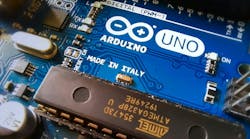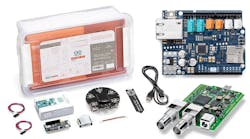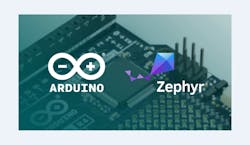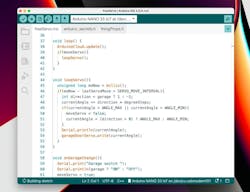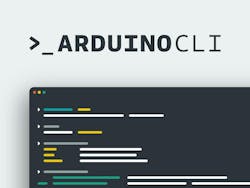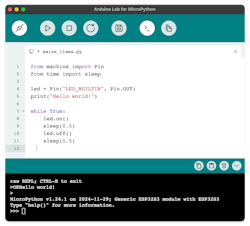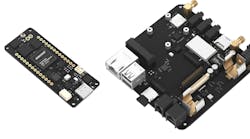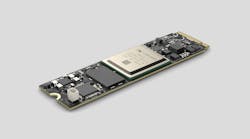Arduino Software on Arduino Day 2025
What you’ll learn:
- The history of Arduino Day.
- What's new with Arduino software:
Since it began in 2014, Arduino Day has been an annual celebration of creativity, open-source hardware and a thriving community of engineers, developers and makers looking to showcase their latest project builds. This year, Arduino Day 2025 marks 20 years of community since Arduino evolved from a simple open-source hardware platform into a global community with millions of makers, educators, and innovators.
More on Arduino
Arduino started as software only, originally. They've also been around for 20 years as of today. So, what's new with their software offering now?
More information can be found on the Arduino Day website.
Goodbye Mbed. Hello Zephyr!
On December 5, 2024, Arduino introduced compatibility with the Zephyr Project's Zephyr SDK for industrial-grade applications. At this time, Arduino launched the first ZephyrOS Arduino core's beta, which started the switch from Mbed to Zephyr. This provided developers with essential support and innovation as MbedOS was discontinued.
Arduino IDE 2 - Big Updates
Arduino’s IDE 2 was launched in September of 2022. but it's had several updates since then to provide improvements and a range of new features. The Arduino IDE 2.3.4 still retains the same CLI (Command Line Interface) as its predecessors. However, it includes a more professional development environment, autocompletion support, debugging support, and a frontend that’s based on the Eclipse Theia Open-Source IDE.
Among the new features are a more modern editor, a more responsive interface, autocompletion, code navigation, and a new Board and Library manager. IDE 2.3.4 also brings a serial monitor with graph plotter, syntax checking, dark mode, DPI awareness, Project Explorer, and more.
Command Line Programming with CLI
Arduino recently released its CLI 1.0 tool, which allows users to program boards from the command line without needing the Arduino IDE. What’s more, the command line interface can be integrated into user’s scripts to automatize various processes. In addition, users are able to manage boards and libraries, compile sketches, and upload code directly to Arduino boards.
According to Arduino, CLI 1.0 offers a gRPC interface that enables developers to interact with the CLI using their preferred programming language, making it ideal for building complex workflows and creating custom IDEs or plug-ins. The CLI tool is also equipped with a Go module that lets users take advantage of Arduino CLI packages within custom packages written in the Go programming language.
Lightweight editing with Arduino Lab for MicroPython
The Arduino Lab for MicroPython is touted as being a lightweight editor for MicroPython that supports connecting boards, code uploads, and file transfers. It also provides an interactive REPL shell. This isn’t an extension of Arduino’s IDE, but rather a separate app that offers MicroPython and uploading code to development boards from a friendly environment.
Some of the unique features of the Arduino Lab for Micropython include an interactive REPL (Read-Eval-Print-Loop) for real-time code execution and debugging, a file-management system, Python syntax highlighting, code execution controls, and more.
About the Author
Cabe Atwell
Technology Editor, Electronic Design
Cabe is a Technology Editor for Electronic Design.
Engineer, Machinist, Maker, Writer. A graduate Electrical Engineer actively plying his expertise in the industry and at his company, Gunhead. When not designing/building, he creates a steady torrent of projects and content in the media world. Many of his projects and articles are online at element14 & SolidSmack, industry-focused work at EETimes & EDN, and offbeat articles at Make Magazine. Currently, you can find him hosting webinars and contributing to Electronic Design and Machine Design.
Cabe is an electrical engineer, design consultant and author with 25 years’ experience. His most recent book is “Essential 555 IC: Design, Configure, and Create Clever Circuits”
Cabe writes the Engineering on Friday blog on Electronic Design.

